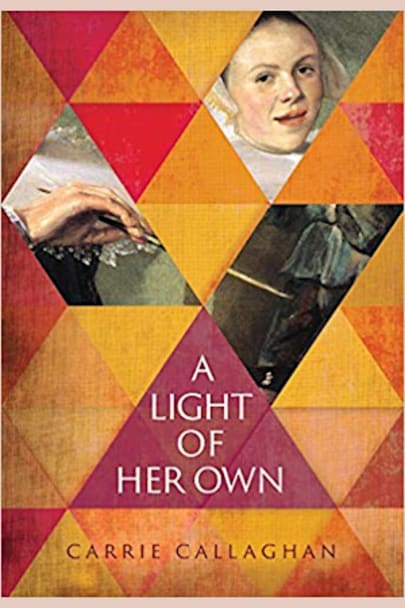n Holland 1633, a woman’s ambition has no place.
Judith is a painter, dodging the law and whispers of murder to try to become the first woman admitted to the Haarlem painters guild. Maria is a Catholic in a country where the faith is banned, hoping to absolve her sins by recovering a lost saint’s relic.
Both women’s destinies will be shaped by their ambitions, running counter to the city’s … to the city’s most powerful men, whose own plans spell disaster. A vivid portrait of a remarkable artist, A Light of Her Own is a richly-woven story of grit against the backdrop of Rembrandt and an uncompromising religion.
Story behind the story . . .
The trail of Judith Leyster’s career was so faint that only years after her death in 1660, collectors began attributing her few surviving paintings to other artists. She signed her work with only a beautiful, stylized monogram. Credit went to Frans Hals, Jan Miense Molenaer, and others. She would remain lost to history until 1893.
more



Looking for inspiring women a bit further back in history? Travel with Callaghan’s debut to the 17th century to explore the intertwined stories of Judith Leyster and Maria de Grebber, two talented Dutch painters during the Thirty Years War. Inspired to find out more about Leyster, who attained master status in a painter’s guild in Rembrandt’s time, Callaghan explores themes of female friendship, sacrifice, and artistic ambition in a time and place today’s historical fiction rarely visits.
A fascinating peek into the life of a woman artist in a time and place that isn’t often written about!
Judith Leyster (1609-1660) was the first female painter admitted to the Haarlem Guild of St. Luke. After their deaths, these women, by virtue of their sex, had their works attributed to males and were essentially lost to the world of art history. A Light of Her Own, the debut novel of Carrie Callaghan, is a vivid fictional account of Judith’s life and brings her out of the shadows.
The book in told in dual timelines, switching between Judith, an apprentice in Franz de Grebber’s atelier, who shares a room with de Grebber’s daughter, Maria, another female painter. Judith has the ambition to open her own studio, but Maria is stifled by her Catholic faith and her obsession with her sins. Their friendship and the stresses their divergent drives occupies a large portion of the book. Judith’s ambition was a welcome contrast to Maria’s religious idée fixe, though her point of view did reveal the the lasting effects of the Reformation in which Catholicism was banned and Calvanism becoming the state religion.
One of the best things about A Light of Her Own is the painterly detail Callaghan paints with her prose. Everything Judith sees is described in terms of color, the quality of the light, the way her model’s eyes crinkle with his smile. If you have seen the paintings of Rembrandt or Hals, Callaghan’s precision allows the reader to visualize not only Judith’s paintings but every day life in Haarlem. Moving the plot along was a mystery of involving linseed oil, a key ingredient in the paints each artist manufactured himself. Supplies had dried up, and the price risen to the point that only the most profitable painters could afford it. I particularly liked that Judith stood up to the leaders of the Guild and revealed the truth.
Overall a fascinating story of women painters during the Dutch Golden Age of painting. It’s art history light—enough fiction to bring Judith to life without weighing the reader down with too many art historical facts.
I enjoyed reading about Judith’s life as a painter in the Guild in the 1600’s! A fascinating time and the perspectives of Maria and her brother who died were all very haunting. I wanted to “like” Judith more but the author did a wonderful job of writing a strong woman who dint really care all that much (until the end) about what her life choices meant.
A female artist, in a time and place where her gender poses seemingly insurmountable obstacles, pursues her dreams nonetheless and establishes her own studio and fights for a position and rights among the male-dominated guild. Not much is known about Judith Leyster, but Callaghan brings this 16th century artist to the page with a vibrancy worthy of Leyster’s fine brush strokes and weaves in a mystery that keeps the pages turning to the very end. I can’t wait for Callaghan’s next book!